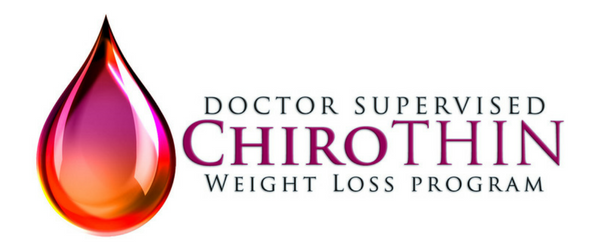
Despite the importance of exercise to a healthy lifestyle, less than 5% of adults engage in 30 minutes of exercise each day.
Only one in three adults get active for the recommended amount each week – but we don’t blame them.
Creating a workout routine and holding yourself accountable is one of the most difficult parts of the weight loss process, but the ChiroThin team is here to help!
Here’s our step-by-step guide to creating your most effective weekly workout schedule yet.
Step 1: Decide Your Goals
Are you trying to lose weight? Build muscle? Maybe you’re just trying to live a healthier lifestyle.
The fitness goals you’re trying to accomplish will determine the steps you need to take to achieve a perfect workout schedule.
If you’re looking to become more flexible, you’ll benefit from multiple yoga classes a week.
Meanwhile, someone who is trying to build muscle would practice yoga once a week as a way to reset their body from intense strength workouts.
Not all goals are created alike. The best goals are ones that are specific, realistic, and measurable.
You’ll also feel more motivated if you create effort-oriented goals in the short-term rather than result-oriented goals.
For instance, say you want to lose 8 pounds this month. Instead of setting the goal to lose 2 pounds the first week, set a goal that you’ll get a good night’s sleep every night this week so you can be ready to hit the gym with maximum energy and focus.
Step 2: Determine Your Time Frame
You have two factors to consider when determining your time frame: the number of weeks or months you expect it will take to reach your goals and the amount of time you have to work out every day.
The first is helpful if you’re trying to lose a certain amount of weight over a given time. It’s a good idea to aim for a caloric deficit of 250-500 calories a day, which equates to losing about 2 pounds a week.
The second will help you plan your workouts. Whether you have 30 minutes a day or 2 hours, you can create an effective workout for reaching your goals.
Days of the week that you have less time can be used for HIIT workouts or a cardio-based activity. If you find yourself with an extra hour on Tuesdays, you can use that day for a more intensive lower-body workout.
Step 3: Create a Balanced Workout Plan
Once you know what you’re trying to accomplish and how many minutes each day you can dedicate to working out, it’s time to start creating your workout plan.
Balanced workout plans will isolate muscles groups so that you can exhaust them during the workout, then give them a few days to rest. A balanced workout plan may look something like this.
- Monday: Upper-body strength training (dumbbells, push-ups)
- Tuesday: Lower-body strength training (squats, hip thrusts)
- Wednesday: Hot yoga class
- Thursday: HIIT training (great for losing belly fat)
- Friday: Full body strength training with cardio
- Saturday and Sunday: rest
Good news for those who hate cardio: a balanced workout plan won’t require you to run on the treadmill every day. Whether you’re looking to lose weight, build muscle, or just get more toned, you’ll see better results faster if you focus on strength training, improving your flexibility, and targeting muscle groups.
Step 4: Factor in Rest Days
After five days of working hard, you may feel like you have a great rhythm going. The idea of taking a day off may not make sense.
But there are a few reasons why you need to take off one or two days a week.
First, your tissue needs time to repair. Intense exercise breaks apart existing muscle fibers to build larger, stronger ones. For them to form, your body needs rest.
Secondly, you’ll prevent injury. Working out every single day without a break may push your body so hard that you’re injured and in pain. If you don’t take care of yourself, your body will reach a point of exhaustion.
Step 5: Mix Up Your Workouts
On the same note, mixing up your workouts will keep you healthy and fit by preventing muscle overuse. When you mix up your workouts, you give muscles that you frequently use a chance to rest while you activate new muscle groups.
Varying your workout type will also keep all of your muscles engaged. Performing the same exercises at the gym for months on end may cause your muscles to become fatigued.
Eventually, the exercises that were effective at first will stop working, and you’ll plateau. Challenge your body with a new workout type, and you’ll find that it’s much easier to overcome the plateau.
And trying new workouts benefits your brain, too. Learning a new skill or activating new parts of your body requires your brain to be alert, firing new neurons.
Step 6: Track Your Progress
Get the most out of your workout routine by tracking your progress. Keeping track of your workouts allows you to notice patterns and modify your routine until you have a streamlined workout schedule.
Log a workout journal. After your workout, write down the exercises you did and key metrics.
If it’s strength training, keep track of the weight you used. If it’s yoga, write down a pose that you found easier than last time or one you struggled with.
Take pictures. It will be hard to notice changes in your body week by week.
By taking pictures, you have a way to see how far you’ve come. Even photos taken 2 weeks apart will show differences you didn’t see in person.
Look at your body composition. When you first start a workout regimen, excess body fat may melt off more easily. A few weeks in, though, and you might not be losing as much weight.
Your body will have less fat to burn off, and you’ll gain muscle mass. Checking your body composition will show you how far you’ve come when weighing yourself doesn’t give you the full picture.
Perfecting Your Weekly Workout Schedule
No one is alike, and neither are their workout routines. By experimenting with your weekly workout schedule and staying on top of your nutrition, you’re on track to becoming healthier than ever before.
Just remember that any good fitness routine gives your body the rest it needs.
Are you ready to get started on the path to a healthier you? Click here to find a ChiroThin doctor in your area.
